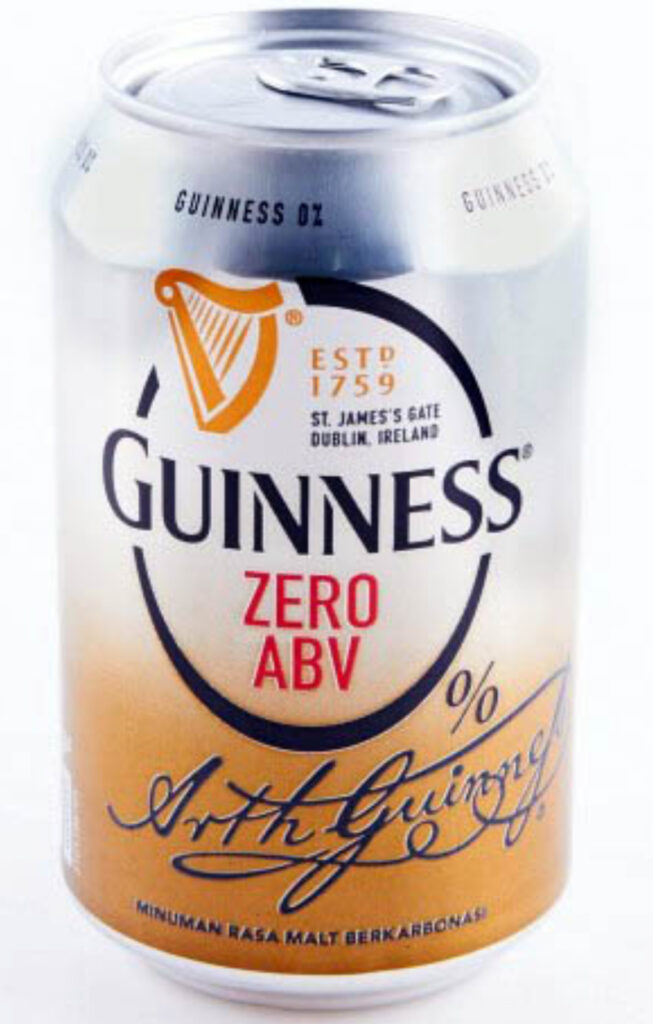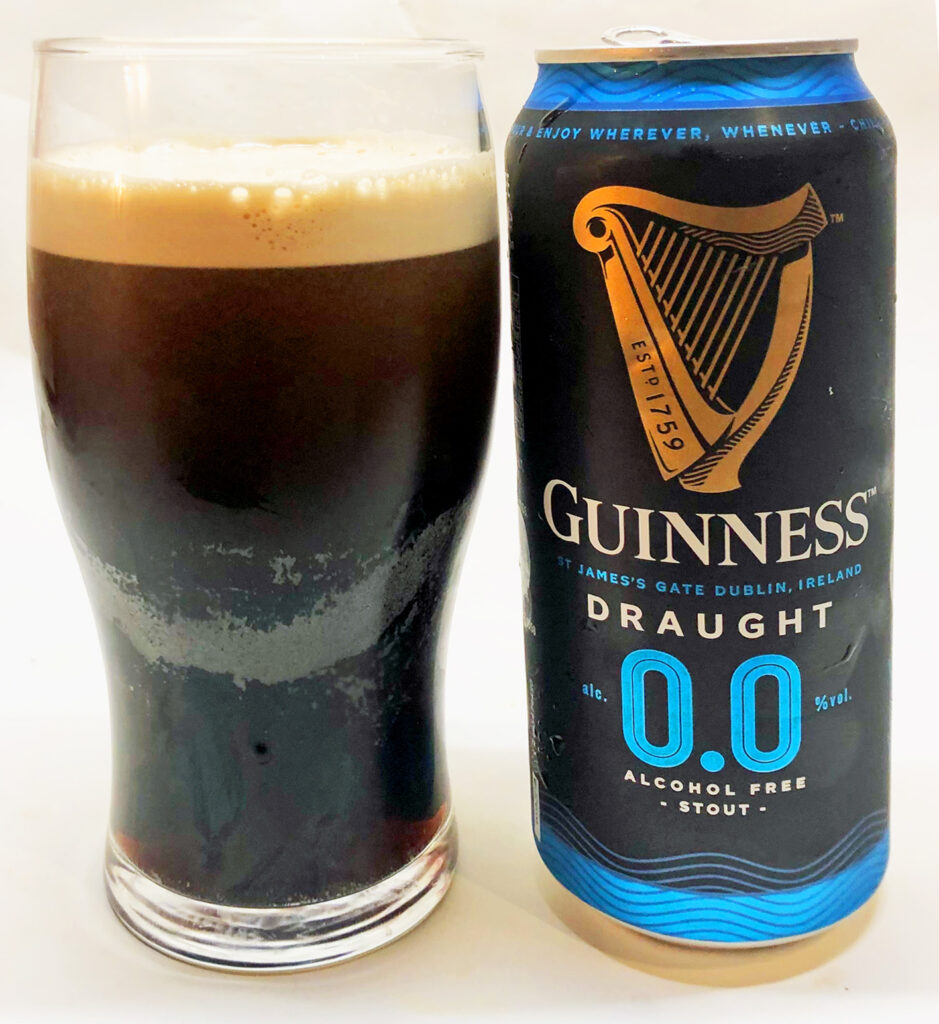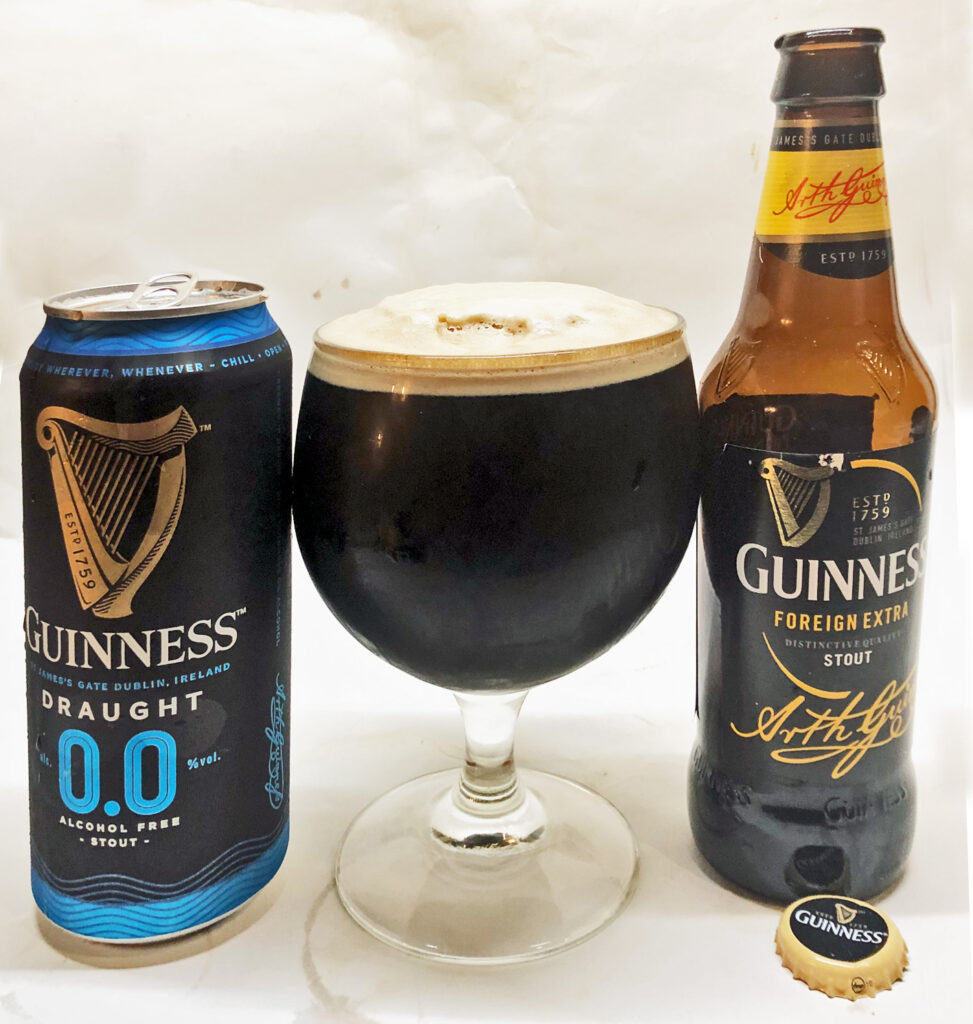I don’t normally believe in asking for free beer, but when a press release arrived with news of the latest product launch from Dublin, Guinness 0.0, and the only places to buy it were stores nowhere near where I live, I let eagerness to sample over-rule reluctance to blag. It’s not as if Diageo can’t afford the cost of posting me a couple of cans, and it wasn’t as if I wouldn’t be rude about the contents if that was necessary.

This is not the first time Diageo has launched an alcohol-free stout: the company brought out Guinness Zero for the Indonesian market (where it sells a large amount of beer) in 2015, although that brew was withdrawn after just three years. But with the alcohol-free bandwagon in the UK picking up more and more passengers, it’s getting to the point that if you DON’T have an AF version of your main brand, you are in danger of being left behind at the bus stop.
I remain, still, dubious and cynical about the chances of long-term success for the low-and-no-alcohol market, because I am old enough to have lived through two previous periods where the sober alternative was hailed as the exciting growth market, only for that initial big surge in growth to splutter and fade. The problem has always been that while drinkers certainly want a product that will deliver all the pleasures of real beer without the problems that come with getting pished, no company has yet been able to successfully deliver that product. Consumers rush to check out the promises of the latest low or no alcohol launch, the initial sales figures look tremendous, drinkers soon find those product promises are not being kept, and the drink actually falls well short of the hype, being a poor substitute for real beer, sales subsequently dive into the terrain and another multi-million-pound R&D/marketing effort gets written off.
What could make a difference this time is that the market in beer looks as if it may be going through one of its rare but seismic changes of focus, in this case from the primary purpose of drinking beer being delivery of refreshment to the primary purpose being the delivery of flavour. (The last time this happened, in the UK, was 60 to 80 years ago, when the primary purpose of beer drinking, as new cohorts of drinkers arrived, changed from rejuvenation to refreshment, and lager began to rise from an insignificant two per cent or so of the market to its current massively dominant 75 per cent or so.)

Now, it’s a lot easier to deliver a satisfying low or no-alcohol beer when you’ve got plenty of flavour to hide the fact that you’ve got no alcohol than it is when you’re trying to imitate a pale and thin-tasting lager without the punch of C2H6O underneath. Thus as “flavourful” beers, led by IPAs and the like, begin to take an increasing market share, so we are seeing low-alcohol and no-alcohol versions of those beers, such as Punk AF and Ghost Ship 0.5%, spread out along the shelves of supermarkets and off-licences.
Given that fact, therefore, an AF stout, oxymoronic though that is, has a fair chance of delivering something closer to the experience of the “real” beer than most brews with the alcohol taken out. The press release for Guinness 0.0 says that the company spent four years perfecting the product, arriving at a method that “gently removed the alcohol though cold filtration,” thus “avoiding thermal stress”. I note that the ingredients include fructose and “natural flavourings”, suggesting that the “filtration” (osmosis?) removes more than just alcohol, but I doubt anyone at Diageo is going to reveal what really goes on.
Anyway, the result is … pretty acceptable, actually. The in-can widget delivers the familiar thick, creamy head, with a touch of chocolate on the nose. The instruction is to chill the can, but I would suggest that if you keep the cans in the fridge you pour the beer into your glass and then let it warm slightly: the initial impression straight from the refrigerator is thin and watery, with a slight “burnt” note, but that improves as the beer warms up a little, with the flavour compass swinging round to “roasty”, and the mouthfeel opening up and becoming rounder and fuller. There is a good beery bitterness to ensure the palate does not become over-satiated, a reminder that “sessionability” is not just a question of low alcohol content, but of maintaining interest. As a “distress purchase” if you really want a beer but simply cannot drink alcohol at that moment, Guinness 0.0 certainly passes the test: it might even be that vastly rare product, an AF beer you could drink all night without wishing your glass was filled with actual proper beer. That, however, is an experiment I’m not going to try, at least not until I have the “designated driver” role thrust upon me …
One experiment I DID carry out was something I’m sure won’t amuse Diageo much: what happens when you mix Guinness 0.0 with its vastly bigger brother, Guinness Foreign Extra Stout, the massive 7.5 per cent alcohol monster that is the closest we have today to the strong stouts of the 19th century?

If you try this one at home, don’t put the FES in the glass first, because when the cold 0.0 hits the warmer FES, all the nitrogen drops out of solution and you have a glass half filled with foam. Rookie error, I know, but … once that is sorted, the head you end up with is so thick and stiff, it’s actually biteable, almost like clotted cream. The beer, now halved to a light 3.75 per cent alcohol, is, perhaps, what an old-style Irish porter might have been like: a long after-taste for its medium-full mouthfeel, hints of sour tartness and earthy umami, a very pleasant drink that was certainly vastly more interesting and multi-dimensional, even at its comparatively low strength, than canned Guinness normally is. THAT was a beer I would certainly have carried on drinking all night.
Note: Guinness 0.0 was withdrawn weeks after this review was written after The Food Standards Agency said the product “may contain mould.” It was due to be relaunched in September 2021.


Excellent Idea. I still have a crate of FES in the cellar.
I’ll be right over …
Why? Welcome to the NEW WORLD ORDER! LOCK AND LOAD MY FRIENDS! BEER CONSUMERS AND BREWERS DON’T TAKE KINDLY TO TYRANNY!
Fascinating. Now try it with Harvey’s Imperial!
An interesting idea, but I’m really not sure I would want to waste an Imperial trying it out …
C2H5OH please!
I always mix FES into regular Guinness. Its a much nicer full bodied drink. I wish Guinness would make a sweeter 5.5 or 6% stout
I find its all in the training. The more you drink, over a period of time, the more you can drink regardless of wine beer or spirits. However cider plays trouble on my stomach almost straight away if you know what I mean. Why is this?
I haven’t tried the new 0.0 but if they’re using membrane extraction of ethanol then it should leave all the esters and other flavour compounds alone. Brewery marketing people love terms like ‘cold filtered’ but you really wouldn’t want to drink anything ‘hot filtered’. Mixing it with another beer, any beer, should just be like a any other beer mix, save for the alcohol dilution. I still can’t see the point. If I don’t want alcohol, I don’t drink it.
Because mixing FES, a beer where everything is turned up to 11, with a no-alcohol stout turns the controls down, which makes for an interesting experience – it’s not about the alcohol, but the flavours.
[…] Martyn Cornell: So What Happens if You Mix the New Guinness 0.0 with Guinness Foreign Extra Stout?, […]
[…] Eoghan Walsh: Zinnebir — A Beer for Living In, Pellicle Magazine2. Martyn Cornell: So What Happens if You Mix the New Guinness 0.0 with Guinness Foreign Extra Stout?, Zythophile3. Jonny Garrett: 15 Years of Endless Summer — How Thornbridge Jaipur Changed British […]